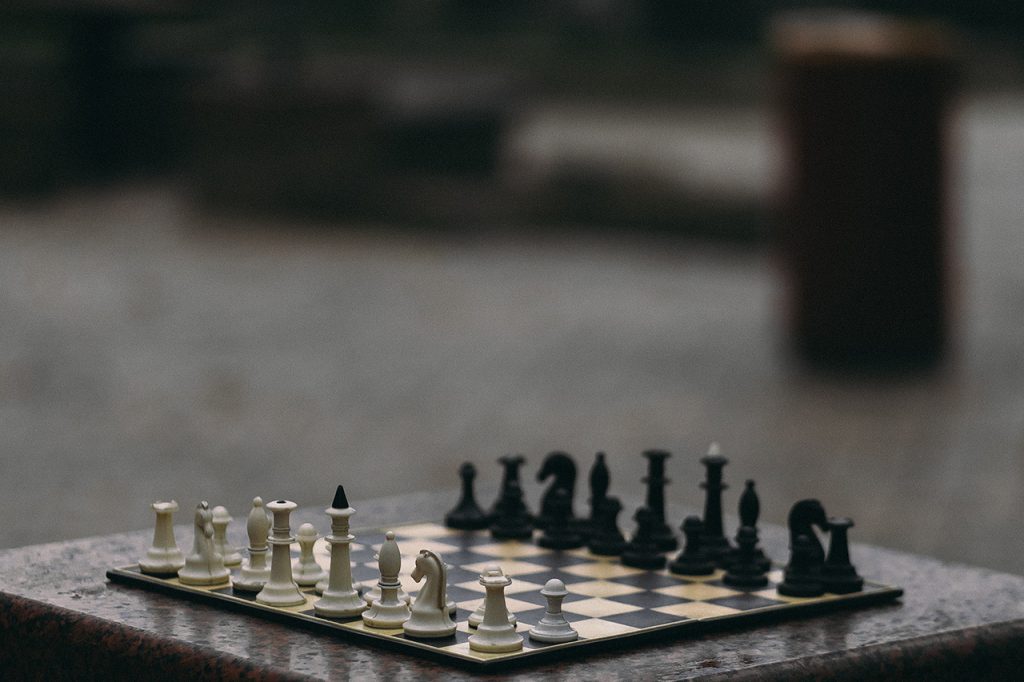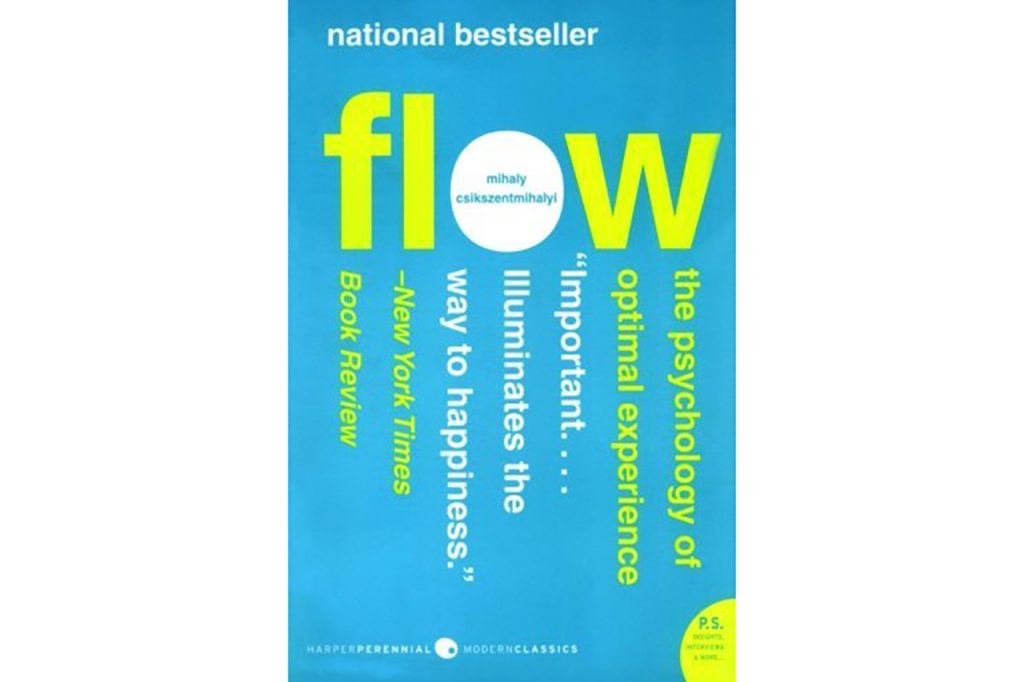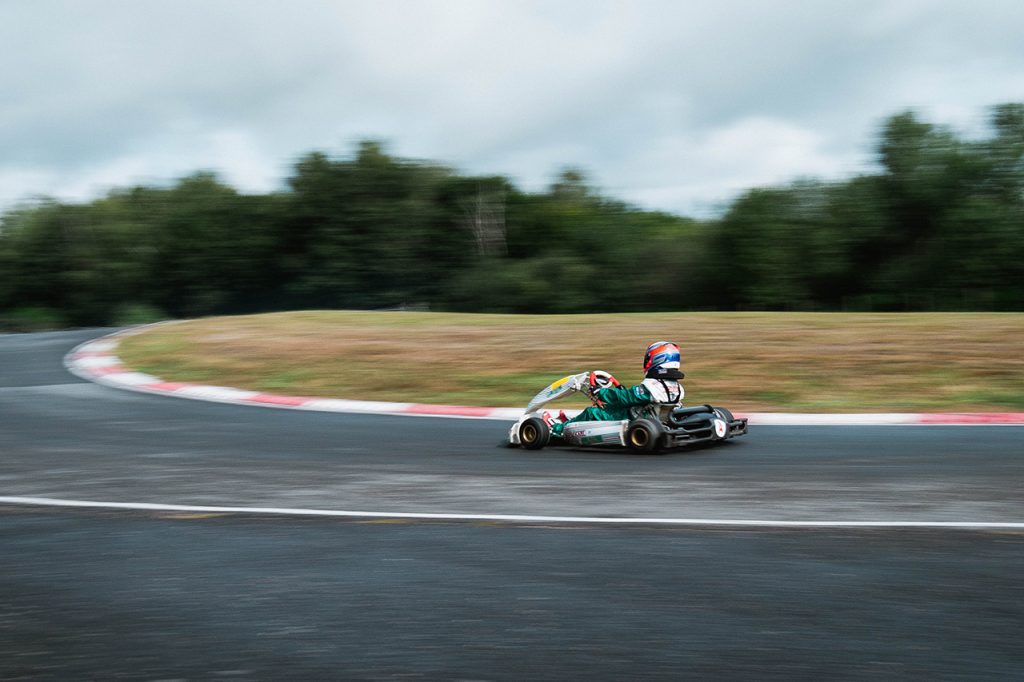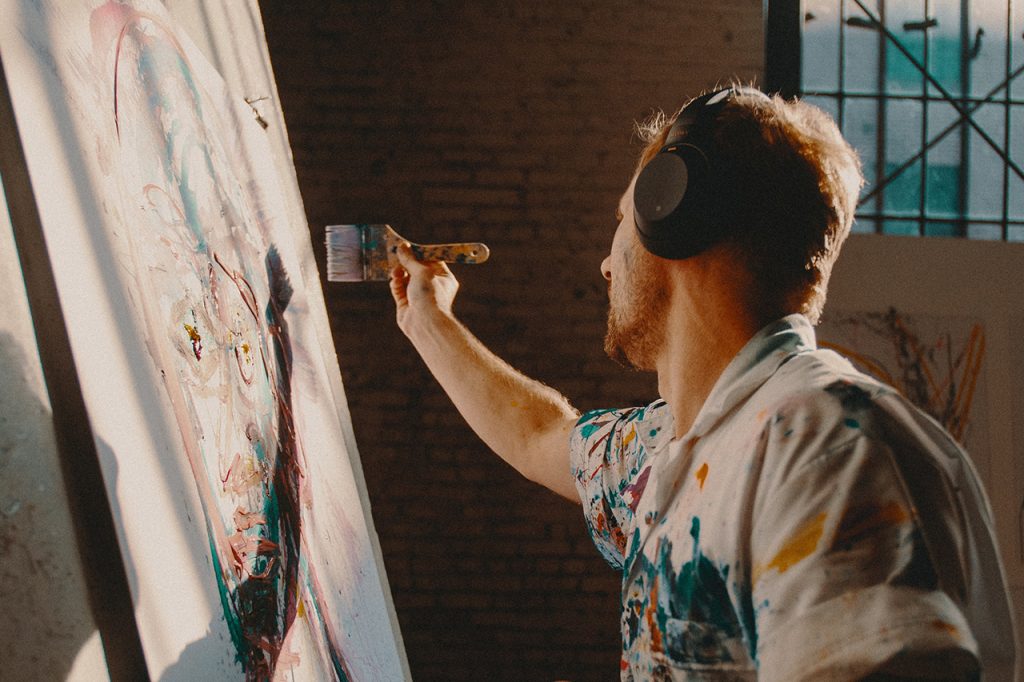Flow is one of those psychological insights that just feels right. More than that, it’s one of those discoveries that, once you come across it, you feel like you want to use it, share it, and get into it as often as possible. If you’re like me, it also makes you want to dig a bit deeper and find out how it all came to pass.
After a few years of research — few compared to someone like Mihaly Csikszentmihalyi — I realised that flow had to be core to the checklist I was making for Time And How To Spend It, even if I had to rename it ‘intensity’ to fit the STORIES mnemonic. STORFES just doesn’t have the same memorable ring to it, does it?
The story that follows is my story-fied version of how Csikszentmihalyi discovered flow and its key components. It’s an extract from my book, Time And How To Spend It.
In the late 1970s, a little-known scientist had a radical idea that would lead to a completely new understanding of how a person can achieve better experiences, and live a better life. His name was Mihaly Csikszentmihalyi. If you want to say it out loud, it sounds like ‘Mee-high Cheek-sent-mee-high-ee’. His friends called him Mike.
Playing Chess In A Prisoner Of War Camp

Csikszentmihalyi was born in 1934, in a town on the Adriatic Sea that had been part of the old Austro-Hungarian empire. His family came to the US just after the war. Csikszentmihalyi had always been fascinated with how and why different people experienced similar situations differently. During the war, his family had been interred in a prisoner-of-war camp in Italy. Why, he’d wondered, had some people found it so upsetting, while others were able to stay calm? How come he’d been able to shut out all the unpleasantness around him, for instance, and focus on playing chess instead?
After his family moved to the US after the war, Csikszentmihalyi studied psychology, and became a professor at the University of Chicago. As his career in psychology progressed, he became frustrated at the way so many psychologists were turning to the area that B. F. Skinner was known for: behaviourism. Sure, he understood that because behaviourism was only concerned with what was external and observable and measurable, this could make his subject, psychology, appear more scientific. But, by ignoring what went on inside someone’s head, this approach also missed a huge amount of what really mattered. After all, as Csikszentmihalyi once wrote:
“Life unfolds as a chain of subjective experiences… The quality of these experiences determines whether and to what extent life was worth living.”
Mihaly Csikszentmihalyi
As people like Tristan Harris have pointed out, the application of behaviourism is great if you want to influence people to keep watching, clicking, or doing whatever it is you want them to do. But it misses out on whether that watching, clicking, or whatever, makes their life more worth living, or not.
Perhaps, Csikszentmihalyi wondered, there could be a way to turn feelings into the sort of data that would be observable and measurable and comparable, and therefore more useful and meaningful? One of the problems with asking people how they felt had always been that by the time you came to sit down with them, with your clipboard and pen, and ask them, the time you were asking them about had passed. The Nobel prize-winning psychologist, Daniel Kahneman, refers to this as the difference between the ‘remembering self’ and the ‘experiencing self’. When you think back to Christmas Day or a holiday at Disney World, you tend to think of the turkey and the presents, and the roller coaster and meeting Mickey, not the petty arguments or the queues, the so-so food, and the kids getting crabby. The problem with asking people afterwards is that no one remembers exactly how they felt at the time.
The Beeper Test

Csikszentmihalyi solved this longstanding problem with a then-new piece of technology called a beeper. In case you’re not old enough to remember them, beepers were like mobile phones that only did texting, and could only handle incoming messages. They became popular with millions of people in the 1980s, but when Csikszentmihalyi thought of the idea, at the tail end of the 1970s, they were still mostly used professionally, by doctors in hospitals, for instance.
So, Csikszentmihalyi gave people beepers, and asked them to do something very simple. Whenever the beeper beeped, they were to record what they were doing and how they felt. This was, as you may have realised, the origins of the method that Mackerron and Mourata would use for their Mappiness app decades later.
The direct result of this new method was that Csikszentmihalyi could not only turn subjective feelings into objective data, he could also find out whether, and to what extent, people felt their lives were worth living.
How To Make A Teenager Happy

Consider the light shone on a the typical week in the life of an American girl named Lorraine, for instance, one of the first people Csikszentmihalyi tried this beeper method with. At the time of the study, Lorraine was a senior in high school, so a teenager about to leave school. She was in the middle of figuring out what she was going to do in her first year of college. Her plan was to go to Spain on an exchange programme.
At the beginning of the week, Lorraine felt fairly positive. She said she was feeling happy and friendly when talking with friends, attending class, watching Miss America on television, and speaking with her aunt on the telephone.
Her mood changed dramatically on the Wednesday. Up till around midday, she was feeling good. But then she found out she couldn’t go to Spain. By 1.30 p.m., she was very sad and very angry. Her mood remained much worse than usual for the rest of the day. The only time she reported feeling happy was when she was thinking about gorging on food at 4.20 p.m.
For the rest of the week, whenever Lorraine was on her own or in class, her moods remained bad. She perked up when she was with other people. On Friday and Saturday night, for instance, she went go-karting, partying, and drinking with friends – and that cheered her up. Her mood even improved on Thursday, when she watched two friends, Penny and Merri, fighting. Penny, by the way, was incensed because Merri had gone and kissed Danny.
In the follow-up interview after the experiment, Lorraine explained her moods like this: ‘When I was with people, it was better. When I was alone, I’d just think about [not going to Spain].’
Since then, Csikszentmihalyi and colleagues repeated experiments like the one he conducted with Lorraine, with thousands of participants around the world: from teenagers in Tokyo to old women in Korea, farmers in the Italian Alps, and factory workers in Chicago. They gathered over a hundred thousand pieces of evidence. The results of these experiments have led to a decisive, radical new understanding about when people are happiest, what makes people happy, and, so, what we should all do to have the best experiences and live our best life.
Why Go-Karting Beats Couch Potato-ing

Radical – because, if you think about it, when most of us fantasise about the good life, we tend to think we’ll be happiest when the to-do list is complete, the work is done, and we’re lazing about, sitting on the sofa maybe, or a sun lounger. But, as the data from the experiment showed, the opposite is true.
If someone was beeped when they were taking it easy, it turned out, they were far less likely to be happy. Think about Lorraine: when she was alone and in class, she ended up ruminating on her bad luck. If, on the other hand, someone received a beep when they were intensely focused on doing something – like when Lorraine was go-karting – directing all of their attention and what Csikszentmihalyi called their ‘psychic energy’ on it, they were far more likely to be happy.
When Csikszentmihalyi spoke to people and analysed their beeper data, about what they were doing when they’d felt happy and how they’d been doing it, he realised something wonderful — and critically important for everyone one of us. In order for someone to have what he called ‘optimum experiences’, it’s not what you do that matters. It’s how you do it that really makes the difference.
It doesn’t matter if you’re rock-climbing, cycling, painting, partying, performing surgery, practising yoga, playing netball, football, basketball, chess, or guitar in a band, just hanging out with friends or, even, watching Penny fight Merri because she kissed Danny. So long as it occupies all of your attention and ‘psychic energy’, it’ll almost inevitably lead you into a relaxed, happy psychological state that he named ‘flow’.
The 8 Gateways To The Flow Zone

Now that he’d discovered flow, this magic ingredient that leads directly to optimum experiences and happiness, Csikszentmihalyi set about finding out what was needed for a person to enter the zone of flow. Based on thousands of interviews, he found there are eight elements to consider. The first five are all clear and simple. The final three are paradoxical, and maybe even a little strange.
First, the activity — because although it’s how you do something that matters, what you do can help you to reach flow, and some things are far more engaging than others. You can’t be in flow if you’re passive, like lying on a sun lounger or slouched in front of the TV. You have to be active, and the activity should be challenging enough that it tests you. ‘The best moments in our lives are not the passive, receptive, relaxing times,’ Csikszentmihalyi wrote. ‘The best moments usually occur if a person’s body or mind is stretched to its limits in a voluntary effort to accomplish something difficult and worthwhile.’ Have you ever played tennis or football against someone who is not nearly as good as you? Or someone who’s much better? It’s not nearly as fun as playing someone who’s about the same level, is it? Or, have you ever picked up a children’s book and realised the plot’s just not that interesting, or an academic treatise that’s just way too complicated — compared to a thriller that keeps you turning the page? The best activities should pass the Goldilocks test: not too hard, not too easy, just right.
Second, you should be in ‘full body awareness’, so both your mind and body are not only entirely focused but also completely in sync with each other, with no spare psychic energy that could be caught by a passing distraction. This ‘full body awareness’ is the critical ingredient that athletes talk about when they say they’re in the zone. Here’s an example of what this looks like: when Serena Williams throws the ball up high with her left hand, reaches up and behind with her right, arches her backs to extend as much as possible, then whacks the ball to serve — or when she whizzes across the court to reach a drop shot, or smashes a scything backhand down the line — you can be sure she’s operating in the intense flow of full body awareness.
Third, there should be clear goals, and fourth, there should be feedback. You should know as soon as possible if you’re reaching those goals. Fifth is about the activity. It should be the sort of immersive experience that leaves you so focused you can’t think about anything but this moment and this place, right here, right now. Think of cycling down a hill with your feet off the pedals, or playing one of your favourite songs as loud as you want in an empty house and singing along.
Sixth, seventh and eighth are the odd, paradoxical aspects of flow. Sixth, there should be what Csikszentmihalyi called the ‘paradox of control’. You should be at the absolute outside edge of your ability, so that you’re only just, not quite, but yes just about hanging on in there. As Csikszentmihalyi wrote in Flow, ‘what people enjoy is not being in control, but the sense of exercising control in difficult situations’ — his italics, not mine, by the way. In skiing terms, you’re haring down the hill, flying along at a pace just at the edge of your ability. In performance terms, you should be playing a piece of music that challenges your entire mind and body. This is why jazz musicians, as they constantly riff this way and that, are often thought of as exemplars of flow.
Seventh, while your mind and body is entirely present, at the same time you’ll lose a sense of self during a flow experience. And, even though you’ve given up your sense of self during the flow experience, afterwards you’ll feel an expanded sense of who you are. You’ll feel taller. Maybe you’ll walk taller. Maybe you’ve expanded your capabilities. You’ve probably expanded your sense of possibilities: perhaps you’ve moved from ‘I can’t’ to ‘maybe I can’, or even ‘yes, I can’. After a flow experience, you’ll have a sense that you’ve moved up the ladder of personal possibility and human existence, that you’ve become, in some way, a somebody.
Eighth, during a flow experience, time has a strange, elastic quality. On the one hand, a moment can stretch into what seems like minutes. On the other, time flies by, as you’re caught in a reverie of flow. Somehow tennis players will later say they saw the ball flying across the court, even though it may have been flying close to 100mph, and virtually impossible to see. And a painter caught up in the act of painting, or a gamer playing a video game, might be so immersed that hours pass and they don’t notice at all.
So now, all those years later, Csikszentmihalyi found an answer to the question he’d wondered about as a child in a prisoner-of-war camp in Italy: why had some been able to shut out the unpleasantness all around when they were doing something like playing chess? The answer, so his research showed, was simple. In those moments, despite their surroundings, they were having an optimum experience and therefore ‘happy’, because despite their situation, all of their psychic energy was focused, and they were in a state of flow.
Campfire 30 on Wednesday November 17 will be in honour of Mihaly Csikszentmihalyi. We will, of course, focus on flow, and how to design it. If you are not yet a member of the WXO but would like to join us, please apply via this page.





